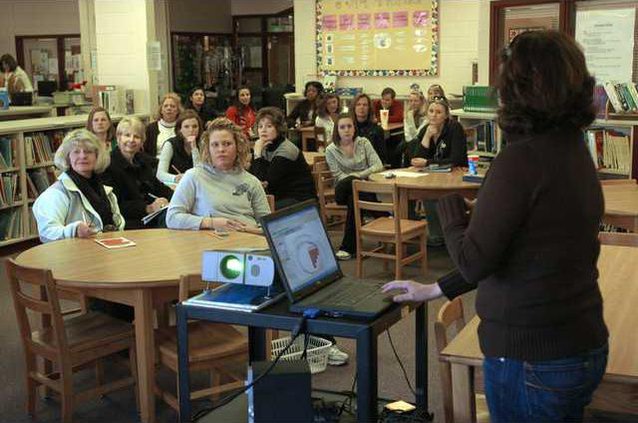Teachers in Gainesville City and Hall County schools have been hit with furlough days for next year, but they just keep going.
With less planning time and less instructional time, a little whining is allowable.
But that’s not what parents and administrators are hearing.
“Some of the finest people wear shoe leather and are teachers,” Hall County Schools Superintendent Will Schofield said. “They’re not here to be rich or famous. Teachers get it. You look into their eyes, and you don’t see anger or bitterness. They’re tired and frustrated, and they continue to do more with less.”
But there’s a limit to how far you can push people.
“I can see an effect on the morale,” he said. “Every time I’m in a school, which is every day, I ask how they’re doing, and they say they’re OK but tired. It’s frustrating to not be able to do anything but put an arm around them.”
For the 2010-2011 school year, Hall County Schools announced eight furlough days, and Gainesville City Schools announced 10 furlough days to combat the budget crisis. School districts across the state have cut extracurricular programs and athletics, and some have shortened the calendar to a four-day school week.
But the only viable option for these two Northeast Georgia districts was furloughing teachers.
“People understand our municipal budgets now more than ever, and they see 90 percent of the school budget is salaries,” Schofield said. “You’re not going to save on cutting diesel fuel or turning off the lights. It has to involve people, either with fewer of them or paying the same people less money.”
The districts cut what they could and then looked at the amount needed and equated it to furlough days. In Hall County, one day in school costs $700,000, so the district cut eight days to make up a $5 million budget gap.
In Gainesville schools, one day costs $133,000, so 10 furlough days gives the $1.3 million to cover expenses.
Being able to plan the furloughs in advance has made a huge difference, Dyer said.
“We know about it to start with this year, and they’re spread out over 12 months, so it’s more palatable and less noticeable,” she said. “We were able to bring in different points of view. One parent wanted to start school later, but that doesn’t include the input of a working parent who needs to provide child care or high school students who wouldn’t finish exams in December. Some go to college in January, and they would lose that opportunity for an early start.”
Fewer planning days also means fewer professional learning days for collaboration, instruction and development.
“We’re always learning, we’re all lifelong learners,” said Kim Davis, assistant principal for Fair Street International Baccalaureate World School. “Every piece we plan helps the students, and our ultimate goal is to be better. We can individually learn on our own and do without pay, but it’s just sad because, personally, that’s my car payment. I have two children in college, and I’m in college.”
Sometimes all you can do is move forward, Johnson High School Principal Damon Gibbs said.
“You have less planning days and take a financial hit, but the great thing about being in the education business is you’re out to meet the needs of kids,” he said. “You work every bit as hard as you ever worked. Nobody loves it, but the calendar is in place and teachers know it is what it is. You make slight adjustments and just keep planning.”
Schofield looked at many options and even visited legislators to ask for a change in teachers’ pay scale, which would reduce salaries but prevent cutting into the school calendar.
“No one wanted to touch it politically. If we don’t have enough marbles, what stays constant?” he said. “The students still need to go to school, but we capitulated to fewer days with the understanding among adults that the net effect is the same.”
Schofield often talked to 6th District State Rep. Tom Dickson, who was a former superintendent and is a member of the House Education Committee. Dickson noted that most educators and legislators will opt for furloughs, which are supposed to be short-term changes.
“Teachers are rightfully concerned about what will impact payroll,” he said. “But by the very name, this tends to say it’s a temporary situation as opposed to a change in the salary schedule, which would be much more permanent.”
Most legislators are sensitive to the more permanent change, which translates to constituency and election hinge points, he said.
“When you talk about economic conditions and how they impact schools, you quickly come to the realization that you can’t avoid impacting funding to school systems,” Dickson said. “When you look where the money goes, you can’t achieve that kind of savings without impacting salaries, and then how do you do it? Invariably you come back to furloughs.”
But Schofield still wants to keep students in school.
“I think we can reduce salaries, and I think we should have,” he said. “Schools are not designed for big folks. They’re for little folks, and we’ve been deciding by the interests of the big folks.”

